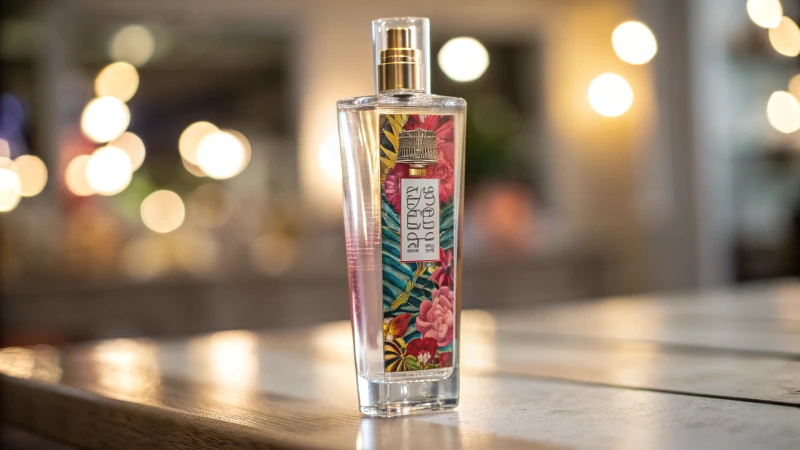
Have you ever looked at a beautifully labeled perfume bottle and wondered how the label stays pristine?
To make cosmetic glass labels last, choose the right adhesive, treat the surface properly with methods like sandblasting, and use durable printing techniques such as UV printing. These practices ensure strong adhesion and resistance to environmental wear.
You know, I remember the first time I dealt with a peeling label on a glass jar. It was so frustrating! That experience taught me the importance of understanding not just the look but the durability of labeling techniques. By exploring advanced technologies like laser micro-processing and eco-friendly adhesives, I’ve found that the longevity and quality of our packaging can significantly improve. This not only enhances the product’s appeal but also aligns with eco-conscious trends, which is becoming increasingly crucial in today’s market. So, let’s dive into these strategies and transform your packaging game!
UV printing enhances label durability on glass.Wahr
UV printing cures ink instantly, creating a robust and lasting finish.
Sandblasting weakens label adhesion on glass surfaces.Falsch
Sandblasting roughens the surface, improving adhesive bonding strength.
What Are the Most Effective Surface Treatments for Glass?
Ever wondered how glass can transform from fragile to fabulous? Discover the secrets behind its remarkable resilience and beauty.
The most effective surface treatments for glass include sandblasting, acid etching, plasma treatment, laser micro-processing, and nano-coating. These methods enhance both adhesion and durability, each tailored to specific applications.
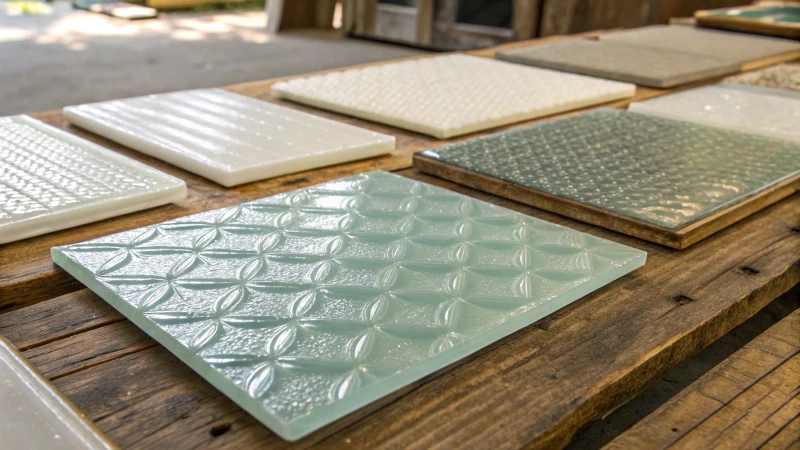
Traditional Surface Treatments
-
Sandblasting: Have you ever thought about how glass stays beautiful and strong, despite being so delicate? I remember the first time I learned about sandblasting—it was during a visit to a glass workshop. Watching the abrasive materials dance over the glass surface, I realized how this method roughens up the glass just enough to make adhesives stick better. It’s a technique that’s been around for ages, especially in industries where labels need to last.
-
Acid Etching: Then there’s acid etching. Imagine applying acid on glass to get that elegant frosted look while also making it more adhesive-friendly. This dual-purpose technique is perfect for both aesthetic and practical needs.
Advanced Surface Technologies
-
Laser Micro-Processing: Diving into the future of glass treatments, laser micro-processing always amazes me. Picture lasers engraving tiny patterns onto glass without any chemicals. It’s like watching a sci-fi movie, where high-end packaging becomes not just a fantasy but reality.
Advantages Anwendungen Enhanced Adhesion Luxury Packaging Chemical-Free High-End Cosmetic Bottles -
Nano-Coating Technology: And let’s not forget about nano-coating technology. It’s like giving glass an invisible shield that defends against scratches and oxidation—ideal for bottles that face the elements daily.
- Benefits: Think of products that are always in contact with water and oil; nano-coating makes them almost invincible.
- Industry Insight: Despite its perks, many manufacturers haven’t yet embraced nano-coating solutions1.
Emerging Trends in Glass Treatments
-
Plasma Treatment: Plasma treatment always seems like something out of a science fair project. It uses plasma to boost glass surface energy, making adhesives stick better—a neat trick for anyone looking to improve bonding without harsh chemicals.
-
UV-Cured Coatings: UV-cured coatings are another fascinating trend. They protect labels from fading in sunlight, which is crucial for products exposed to the elements.
Technique Purpose Durability UV Curing Fade Resistance High Plasma Treatment Adhesion Improvement Moderate
Comparing Effectiveness
Every treatment has its own magic:
- Durability Enhancement: Laser micro-processing and nano-coating are top picks for long-lasting protection.
- Adhesion Improvement: Sandblasting and acid etching are tried-and-true methods that continue to hold their ground.
- Eco-Friendliness: Plasma treatment and UV-cured coatings are excellent choices for the environmentally conscious.
When deciding on the right treatment for your glass products, it’s important to weigh factors like application requirements and environmental impact. For those seeking more detailed information on these methods, delving into industry reports on surface treatment innovations2 can provide valuable insights.
Sandblasting increases glass surface roughness.Wahr
Sandblasting uses abrasive materials to roughen the glass, enhancing adhesion.
Nano-coating technology uses chemical additives.Falsch
Nano-coating applies a protective layer without chemical additives.
What Adhesives Ensure Long-Lasting Cosmetic Labels?
Ever picked up a product and felt the label slipping off? That’s the magic of the wrong adhesive!
For the most durable cosmetic labels, acrylic-based and UV-cured adhesives are top choices. These adhesives offer superior bonding strength and effectively resist oils, moisture, and temperature fluctuations, ensuring your labels stay put.
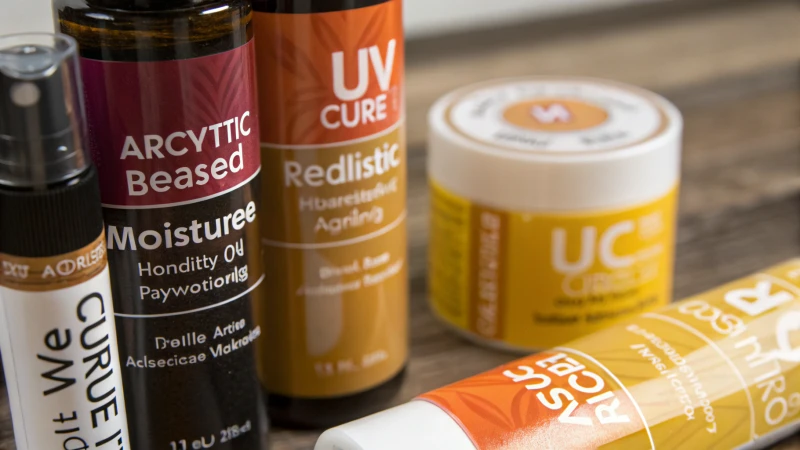
Understanding Adhesive Types
Imagine the horror of walking into a store, picking up a beautifully packaged lotion, and finding its label peeling off. It’s happened to me more times than I’d like to admit. That’s why choosing the right adhesive is crucial. Acrylic-based adhesives3 are like the reliable friend who’s there through thick and thin—they bond well and adapt to different conditions. Meanwhile, UV-cured adhesives4 are like that swift, efficient colleague who gets things done fast, curing quickly under UV light and standing strong against moisture and oils.
Comparative Table of Adhesive Properties:
| Adhesive Type | Bonding Strength | Environmental Resistance | Eco-Friendliness |
|---|---|---|---|
| Acrylic-Based | High | Excellent | Moderate |
| UV-Cured | Very High | Superior | Good |
Role of Surface Pre-Treatment
I remember when I first learned about surface pre-treatment—it was a game-changer! By using techniques like sandblasting or plasma treatment5, you can increase the surface energy of materials like glass and plastic, making adhesives stick like glue (literally!). These methods are essential, especially when dealing with the non-porous surfaces so common in cosmetic packaging.
Importance of Adhesive Compatibility
Choosing the right adhesive isn’t just about strength; it’s also about compatibility with the material you’re using. Different substrates like glass, plastic, or metal react differently to adhesives. I’ve found it crucial to think about factors such as label flexibility and exposure to oils or temperature variations. Understanding substrate compatibility6 can prevent common issues like peeling or fading.
Environmental Considerations
With sustainability on everyone’s lips these days, opting for eco-friendly adhesives is a priority. Solvent-free adhesives are becoming the go-to for many brands due to their reduced environmental impact while still providing strong bonding capabilities. Exploring solvent-free options7 can really boost your brand’s green credentials.
These insights into adhesive selection will guide you in choosing the most durable options for cosmetic labels, ensuring they withstand diverse conditions while aligning with eco-friendly practices.
Acrylic adhesives have moderate eco-friendliness.Wahr
Acrylic-based adhesives are noted for moderate eco-friendliness in the table.
Surface pre-treatment is unnecessary for non-porous surfaces.Falsch
Pre-treatment like sandblasting is crucial for non-porous surfaces to enhance adhesion.
How Do Printing Techniques Affect Label Longevity?
Ever wondered why some labels look vibrant and fresh while others fade faster than your last vacation tan? Let’s dive into the fascinating world of printing techniques and their role in label longevity.
Printing techniques play a crucial role in determining how long labels last. Methods like UV printing and screen printing provide excellent durability against harsh conditions, ensuring labels remain vivid and resilient over time.
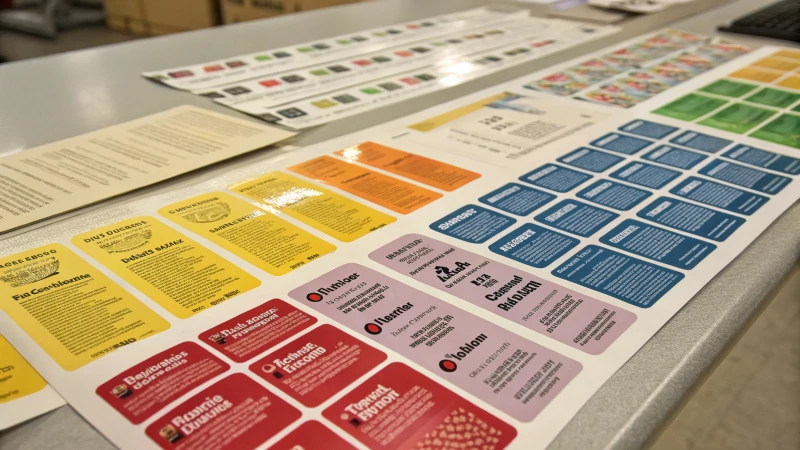
Understanding Different Printing Techniques
When it comes to choosing the right printing technique, it’s a bit like picking the perfect pair of shoes—you need the right fit for the right occasion. Each method offers unique benefits, particularly when durability is key.
Screen Printing
I remember the first time I encountered screen printing—it was like watching a master chef in action. The thick layers of ink were mesmerizing and made me realize how robust this method truly is. If your labels need to withstand a lot of wear and tear, this is your go-to.
- Durability: The thick ink layers mean these labels can handle rough environments.
- Best Used For: Perfect for abrasive conditions, like outdoor equipment or industrial settings.
UV Printing
The science geek in me loves UV printing. Watching the inks cure under ultraviolet light feels like witnessing a magic trick. It’s quick, efficient, and perfect for products that bask in the sun.
- Advantages: Fast curing times and impressive resistance to fading.
- Anwendungen: Ideal for high-end packaging or items that are regularly exposed to sunlight.
| Technique | Durability | Cost | Suitability |
|---|---|---|---|
| Screen Printing | High | Medium | Abrasive environments |
| UV Printing | Very High | High | Sun-exposed products |
| Digital Printing | Moderate | Low | Short lifecycle products |
The Role of Protective Coatings
Protective coatings are like that extra layer of sunscreen you wish you’d applied on a scorching day. They shield labels from environmental stressors, keeping them pristine longer.
- Types of Coatings: From varnishes to laminates, these coatings offer essential protection.
- Benefits: They fend off moisture, UV rays, and physical wear, ensuring your labels last longer against environmental stressors8.
Importance of Material Compatibility
Just as you wouldn’t pair a silk dress with hiking boots, ensuring compatibility between your label material and printing method is crucial. Some inks need a little help adhering to certain surfaces.
- Example: UV inks are best friends with non-porous surfaces.
- Industry Insight: Overlooking material compatibility9 can lead to premature label failure—a mistake I’ve seen too many times.
The Impact of Environmental Conditions
The environment can be unforgiving, much like an unexpected downpour on your wedding day. Whether it’s temperature swings or humidity, choosing the right technique can make all the difference.
- Considerations: Think about factors like temperature changes and chemical exposure.
- Tip: Select methods that endure specific environmental challenges10, ensuring your labels stay strong, rain or shine.
Screen printing offers high label durability.Wahr
Screen printing uses thick ink layers, enhancing resistance to wear.
UV printing is unsuitable for sun-exposed products.Falsch
UV printing resists fading, making it ideal for sun exposure.
Why is it important to consider environmental conditions when designing labels?
Ever tried peeling a label off a bottle, only to find it stubbornly stuck or annoyingly faded? Labels aren’t just about looks; they’re the silent heroes in product durability and appeal.
Considering environmental conditions in label design is crucial for durability and functionality. Factors like humidity, temperature, and UV exposure can deteriorate labels, affecting their adhesion and appearance. Selecting materials and adhesives that endure these conditions ensures your labels not only last but also look great.
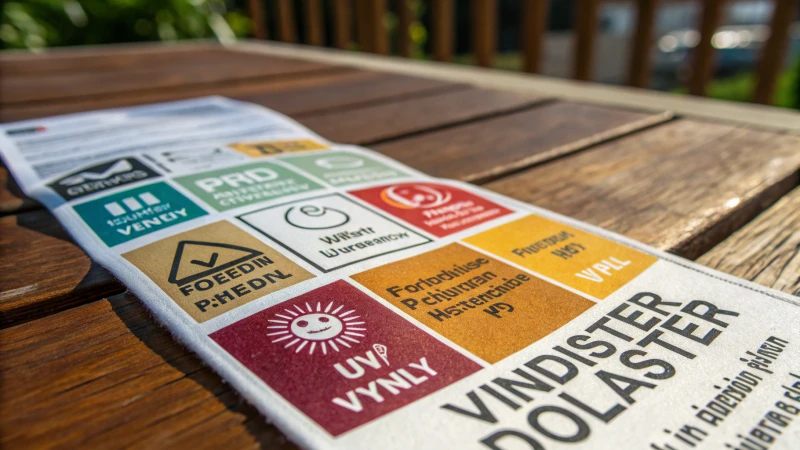
Importance of Environmental Considerations
I remember a time when I bought a beautifully packaged bottle of lotion. The label was so alluring, it practically whispered promises of silky skin. But after a week in my steamy bathroom, it started peeling off, leaving an unattractive mess. This is exactly why understanding how environmental factors like humidity can impact label performance is so important.
Humidity can sneakily weaken adhesive bonds, leading to labels peeling or sliding right off. Temperature swings can also cause labels to expand or contract, messing up their perfect alignment. And let’s not forget the sun; UV exposure can fade those vibrant colors, reducing your brand’s visual impact. For products destined for humid places like Southeast Asia, using waterproof adhesives is a non-negotiable step.
Opt for UV-resistant inks to maintain vibrant designs.
Sustainable Material Choices
These days, choosing eco-friendly materials isn’t just a trend; it’s a reflection of our shared responsibility toward the planet. I’ve noticed how consumers light up when they discover a brand committed to sustainability—it’s like finding a kindred spirit. Biodegradable materials not only shrink our carbon footprint but also enhance your brand image.
| Material | Benefits | Considerations |
|---|---|---|
| Recycled Paper | Eco-friendly, Cost-effective | May not be durable under moisture |
| Biodegradable Plastics | Reduces waste | Costlier than traditional options |
To truly meet sustainability goals, explore biodegradable adhesives11.
Adhesive Selection for Varied Conditions
When I first started dealing with packaging, I underestimated the importance of adhesives. But I quickly learned that a good adhesive is like the unsung hero of label design. Solvent-based adhesives might offer strong bonds, but in humid climates, they could soften and fail you. Acrylic-based adhesives are more resilient against moisture and temperature changes.
For products exposed to fluctuating temperatures, consider heat-resistant adhesives12.
Industry Insights on Eco-friendly Practices
Adopting eco-friendly practices is about seeing the bigger picture. It’s not just about sustainable materials; it’s about the entire lifecycle of your packaging. I’ve seen firsthand how implementing sustainable practices can elevate a brand’s reputation.
Explore the benefits of sustainable label design13 and see how it shapes consumer perceptions.
Practical Examples from Industry Leaders
Many brands are now leading the way in sustainable label design. I recall a company that switched to UV-cured inks—not only are they environmentally friendly, but they also resist fading beautifully.
Such practices protect the label’s integrity and appeal to eco-conscious consumers. Consider UV curing techniques14 for better durability and sustainability.
By focusing on environmental conditions in label design, your brand can ensure its packaging stands the test of time and keeps you ahead in the competitive market.
UV exposure can fade label colors.Wahr
UV rays break down pigments, leading to color fading over time.
Biodegradable plastics are cheaper than traditional options.Falsch
Biodegradable plastics often cost more due to higher production expenses.
Schlussfolgerung
To achieve long-lasting labels on cosmetic glass, use proper surface treatments, select durable adhesives like UV-cured types, and employ advanced printing techniques for optimal durability.
-
Learn about the protective advantages of nano-coating technology in enhancing the durability of glass surfaces. ↩
-
Explore cutting-edge surface treatment technologies that are revolutionizing the glass industry. ↩
-
Acrylic-based adhesives provide strong bonding and flexibility, making them ideal for cosmetic labels in various conditions. ↩
-
UV-cured adhesives offer superior resistance to moisture and oils, crucial for maintaining label integrity. ↩
-
Pre-treatment methods like sandblasting enhance surface energy, improving adhesive strength on non-porous materials. ↩
-
Understanding substrate compatibility prevents issues like peeling or fading, essential for label durability. ↩
-
Solvent-free adhesives are environmentally friendly, offering strong bonding with reduced ecological impact. ↩
-
Discover how coatings protect labels from damage caused by environmental factors. ↩
-
Understanding material compatibility prevents label failures and ensures lasting prints. ↩
-
Explore how temperature and humidity impact label performance. ↩
-
Learn how biodegradable adhesives contribute to sustainability and reduce environmental impact. ↩
-
Discover how heat-resistant adhesives maintain label integrity under temperature fluctuations. ↩
-
Explore sustainable label design practices that enhance brand reputation and appeal to consumers. ↩
-
Understand how UV curing techniques improve label durability and sustainability. ↩



